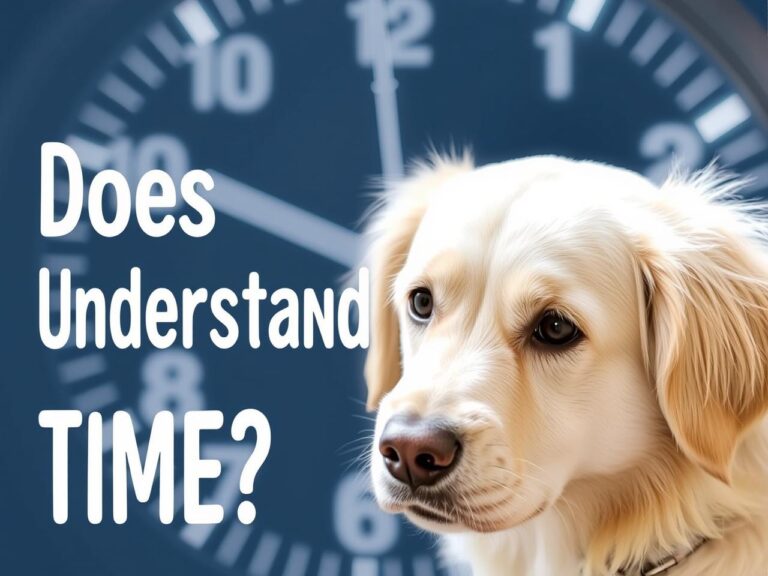10 Signs Your Pet is Secretly Judging You (and What You Can Do About It)
When a pet displays a “side-eye” expression, it may indicate various emotional states or reactions. This behavior, observed in both cats and dogs, can signify disapproval, annoyance, discomfort, or anxiety. Pet owners may notice this expression when their animal companions are not receiving sufficient attention, experiencing delays in feeding, or encountering situations they find unpleasant.
Recognizing and interpreting the side-eye can help pet owners better understand their animals’ needs and concerns. By observing this behavior, owners can take appropriate steps to address potential issues and improve their relationship with their pets. The side-eye may also be a response to unfamiliar or stressful environments.
In such cases, pets may exhibit this expression as a sign of unease or fear. It is important for owners to be attentive to their pet’s body language and take measures to create a more comfortable and secure atmosphere. Understanding the side-eye as an indicator of discomfort can assist owners in helping their pets feel more at ease and strengthen the bond between them.
Key Takeaways
- Recognize the look of disapproval in your pet’s eyes, such as narrowed eyes or a sideways glance.
- Understand your pet’s frustration through sighing, which can indicate impatience or annoyance.
- Decode your pet’s body language, including pawing at you for attention or to communicate a need.
- Pay attention when your pet gives you the cold shoulder, as avoidance can signal displeasure or discomfort.
- Understand your pet’s barks and meows to gauge their vocal judgement and communicate with them effectively.
- Consider how your pet sizes you up against others and works to build a better relationship with them.
- Build a better relationship with your pet by paying attention to their body language, vocal cues, and overall behavior, and responding with care and understanding.
The Sigh: Understanding Your Pet’s Frustration

Recognizing Frustration and Emotional Cues
When your pet lets out a sigh, it’s essential to understand that this is a clear sign of frustration or exasperation. Just like humans, pets can express their emotions through sighs, and it’s crucial to pay attention to these signals. Your pet may sigh when they’re not getting their way, when they’re feeling bored or restless, or when they’re feeling overwhelmed.
Addressing Physical Discomfort and Pain
By recognizing your pet’s sighs, you can take steps to address their needs and improve their overall well-being. In addition to frustration, sighs can also be a sign of physical discomfort or pain. If your pet is sighing frequently or in response to certain movements or activities, it’s essential to take them to the vet for a check-up.
The Importance of Attentiveness
Sighing can be a subtle but important indicator of your pet’s health, and it’s crucial to be attentive to these signals. By understanding your pet’s sighs, you can ensure that they receive the care and attention they need to stay happy and healthy.
The Paw: Decoding Your Pet’s Body Language

Your pet’s paws can be a window into their emotions and intentions. When your pet uses their paws to communicate with you, it’s important to pay attention and decode their body language. Whether it’s a gentle pawing for attention or a defensive swat, your pet’s paws can convey a wide range of emotions and messages.
By understanding your pet’s paw gestures, you can better respond to their needs and strengthen your bond with them. Pawing can also be a sign of discomfort or pain. If your pet is repeatedly pawing at a certain area of their body, it may indicate an injury or health issue that needs attention.
It’s important to be attentive to your pet’s body language and take action if you notice any signs of distress. By decoding your pet’s paw gestures, you can ensure that they receive the care and support they need to stay healthy and happy.
The Avoidance: When Your Pet Gives You the Cold Shoulder
If your pet is avoiding you, it’s important to recognize that this behavior is a clear sign of displeasure or discomfort. Whether it’s a cat hiding under the bed or a dog turning away from you, avoidance is a powerful indicator of your pet’s emotions. Your pet may be avoiding you because they’re feeling stressed, anxious, or upset about something.
It’s crucial to pay attention to this behavior and take steps to address any underlying issues that may be causing your pet distress. Avoidance can also be a sign of physical discomfort or pain. If your pet is avoiding certain activities or interactions with you, it may indicate that they’re experiencing discomfort or pain.
It’s important to be attentive to your pet’s behavior and take action if you notice any signs of distress. By recognizing avoidance as a sign of discomfort, you can ensure that your pet receives the care and support they need to stay healthy and happy.
The Vocal Judgement: Understanding Your Pet’s Barks and Meows
Your pet’s vocalizations can provide valuable insight into their emotions and needs. Whether it’s a bark, meow, growl, or purr, your pet’s vocal judgments can convey a wide range of messages. It’s important to pay attention to the tone, pitch, and frequency of your pet’s vocalizations in order to understand what they’re trying to communicate.
By recognizing and interpreting your pet’s vocal judgments, you can better respond to their needs and strengthen your bond with them. In addition to expressing emotions, vocalizations can also be a sign of physical discomfort or pain. If your pet is vocalizing in an unusual or excessive manner, it may indicate that they’re experiencing discomfort or pain.
It’s crucial to be attentive to your pet’s vocalizations and take action if you notice any signs of distress. By understanding your pet’s vocal judgments, you can ensure that they receive the care and support they need to stay healthy and happy.
The Comparison: How Your Pet Sizes You Up Against Others

Building Trust through Consistency
To build trust and strengthen their bond, pet owners should strive to create positive and consistent interactions with their pets. This can be achieved by establishing a routine and being mindful of the tone and manner in which they communicate with their pets.
Comparing Resources
Pets may also compare their treatment with others in terms of resources such as food, toys, and attention. If a pet feels like they are not receiving equal treatment compared to others in the household, it can lead to feelings of jealousy or insecurity.
Maintaining Harmony in the Household
As a pet owner, it’s crucial to ensure that each pet receives fair and equal treatment to maintain harmony within the household and prevent any negative comparisons from affecting their well-being. By being aware of these comparisons and taking steps to address them, pet owners can create a more positive and loving environment for their pets.
The Solution: Building a Better Relationship with Your Pet
Building a strong and healthy relationship with your pet requires patience, understanding, and consistent effort. By recognizing and responding to your pet’s body language, vocalizations, and emotional cues, you can create an environment that fosters trust and mutual respect. It’s important to spend quality time with your pet, provide them with mental and physical stimulation, and ensure that their needs are consistently met in order to build a strong bond.
In addition to meeting their physical needs, it’s crucial to provide emotional support for your pet by being attentive to their behavior and responding with empathy and understanding. By creating a positive and nurturing environment for your pet, you can strengthen your relationship and ensure that they feel safe, secure, and loved. Building a better relationship with your pet takes time and effort, but the rewards of a strong bond are immeasurable for both you and your furry companion.
In conclusion, recognizing and understanding your pet’s body language, vocalizations, and emotional cues is essential for building a strong and healthy relationship with them. By being attentive to their signals of disapproval, frustration, discomfort, avoidance, vocal judgments, and comparisons with others, you can create an environment that fosters trust and mutual respect. Building a better relationship with your pet requires patience, understanding, and consistent effort, but the rewards of a strong bond are immeasurable for both you and your furry companion.
FAQs
What are some signs that my pet is judging me?
Some signs that your pet may be judging you include giving you a disapproving look, ignoring you, or exhibiting passive-aggressive behavior such as knocking things over or making a mess.
Can pets really judge their owners?
While pets may not have the same cognitive abilities as humans, they are capable of forming opinions and reacting to their owners’ behavior. This can sometimes be interpreted as judgment.
What can I do if I feel like my pet is judging me?
If you feel like your pet is judging you, it’s important to assess your own behavior and make sure you are meeting your pet’s needs. Spending quality time with your pet, providing mental and physical stimulation, and ensuring their basic needs are met can help improve your relationship.
Is it normal for pets to exhibit judgmental behavior?
Pets, like humans, can have their own personalities and preferences. It’s not uncommon for pets to exhibit behavior that can be interpreted as judgmental, but it’s important to remember that they may be reacting to their environment or their own needs.
Can pets hold grudges against their owners?
While pets may not hold grudges in the same way humans do, they can remember negative experiences and react to them. It’s important to address any issues and work on rebuilding trust and a positive relationship with your pet.
How can I improve my relationship with my pet?
Improving your relationship with your pet involves understanding their needs, providing proper care and attention, and building trust through positive interactions. Training, socialization, and regular exercise can also help strengthen your bond with your pet.
Should I be concerned if my pet seems judgmental?
If your pet’s behavior is causing concern or affecting your relationship, it’s important to address any underlying issues. Consulting with a veterinarian or animal behaviorist can help identify any potential problems and provide guidance on improving your relationship with your pet.
Can pets sense their owners’ emotions?
Pets are known to be sensitive to their owners’ emotions and can often pick up on cues such as body language, tone of voice, and facial expressions. This can influence their behavior and reactions towards their owners.
What are some common reasons why pets may appear judgmental?
Pets may appear judgmental due to a lack of attention, changes in routine, stress, or underlying health issues. Understanding your pet’s behavior and addressing any potential causes can help improve your relationship with your pet.
Is it possible to change my pet’s judgmental behavior?
With patience, understanding, and consistent training, it is possible to modify your pet’s behavior and improve your relationship. Identifying the root cause of the judgmental behavior and addressing it through positive reinforcement and proper care can help bring about positive changes in your pet’s behavior.






